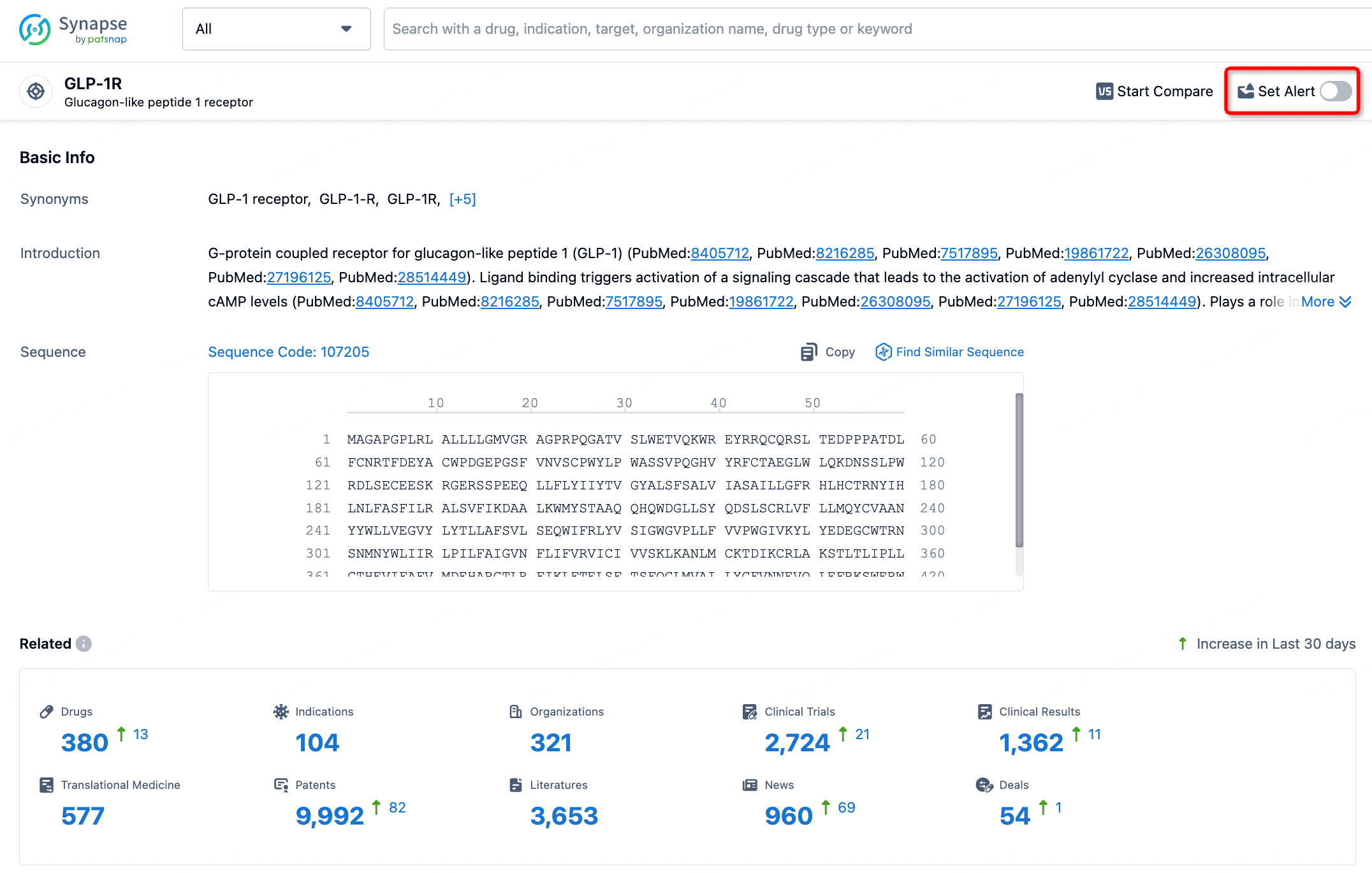Request Demo
What are TRIM24 inhibitors and how do they work?
21 June 2024
Introduction to TRIM24 inhibitors
TRIM24 inhibitors are a promising class of compounds in the field of cancer research and treatment. TRIM24, also known as Tripartite Motif Containing 24, is a protein that plays a significant role in the regulation of transcription and chromatin remodeling. It is often associated with various cancer types due to its aberrant expression and its interaction with oncogenic pathways. As researchers continue to unveil the molecular underpinnings of cancer, TRIM24 has emerged as a potential therapeutic target, leading to the development of inhibitors designed to block its function.
How do TRIM24 inhibitors work?
TRIM24 functions as a co-regulator of transcription, meaning it can influence the expression of genes by interacting with other proteins and DNA. One of its key roles is to act as a reader of specific histone modifications, which are chemical changes to histone proteins that affect how DNA is packaged and accessed in the cell. By recognizing and binding to these modifications, TRIM24 can recruit other proteins that either activate or repress gene transcription.
TRIM24 inhibitors work by specifically targeting the bromodomain and PHD finger domains of the TRIM24 protein. These domains are critical for its ability to recognize and bind to acetylated histones, a type of histone modification. By inhibiting these interactions, TRIM24 inhibitors effectively prevent TRIM24 from exerting its regulatory functions on gene expression. This disruption can lead to a decrease in the proliferation of cancer cells and induce apoptosis, or programmed cell death. Additionally, the inhibition of TRIM24 can hinder the cancer cells' ability to repair DNA damage, making them more susceptible to other treatments like chemotherapy and radiation.
What are TRIM24 inhibitors used for?
The primary application of TRIM24 inhibitors lies in their potential as cancer therapeutics. Given TRIM24’s involvement in several oncogenic pathways, these inhibitors hold promise for the treatment of a variety of cancers. Research has shown that TRIM24 is overexpressed in several types of cancer, including breast cancer, liver cancer, and prostate cancer. In these cancers, TRIM24 contributes to tumor progression by promoting cell proliferation, survival, and metastasis.
In preclinical studies, TRIM24 inhibitors have demonstrated efficacy in reducing tumor growth and enhancing the sensitivity of cancer cells to other treatments. For example, in breast cancer models, TRIM24 inhibition has been shown to reduce the proliferation of cancer cells and impede the progression of the disease. Similarly, in liver cancer, TRIM24 inhibitors have been effective in curbing tumor growth and improving survival outcomes.
Apart from their direct anti-cancer effects, TRIM24 inhibitors are also being explored for their potential in combination therapies. Cancer is a multifaceted disease, often requiring a multi-pronged approach for effective treatment. By combining TRIM24 inhibitors with other therapeutic agents, such as DNA-damaging drugs or immune checkpoint inhibitors, researchers hope to achieve synergistic effects that can enhance the overall efficacy of cancer treatment.
Moreover, the role of TRIM24 is not limited to cancer alone. Emerging research suggests that TRIM24 may also be involved in other diseases characterized by aberrant cell proliferation and survival, such as certain autoimmune disorders and fibrotic diseases. While the primary focus remains on oncology, these additional applications present new avenues for the use of TRIM24 inhibitors.
In conclusion, TRIM24 inhibitors represent a novel and exciting approach in the fight against cancer. By targeting a key regulator of gene expression, these compounds have the potential to disrupt critical pathways involved in tumor development and progression. As research continues to advance, it is hoped that TRIM24 inhibitors will become an integral part of the therapeutic arsenal against cancer, offering new hope to patients battling this devastating disease.
TRIM24 inhibitors are a promising class of compounds in the field of cancer research and treatment. TRIM24, also known as Tripartite Motif Containing 24, is a protein that plays a significant role in the regulation of transcription and chromatin remodeling. It is often associated with various cancer types due to its aberrant expression and its interaction with oncogenic pathways. As researchers continue to unveil the molecular underpinnings of cancer, TRIM24 has emerged as a potential therapeutic target, leading to the development of inhibitors designed to block its function.
How do TRIM24 inhibitors work?
TRIM24 functions as a co-regulator of transcription, meaning it can influence the expression of genes by interacting with other proteins and DNA. One of its key roles is to act as a reader of specific histone modifications, which are chemical changes to histone proteins that affect how DNA is packaged and accessed in the cell. By recognizing and binding to these modifications, TRIM24 can recruit other proteins that either activate or repress gene transcription.
TRIM24 inhibitors work by specifically targeting the bromodomain and PHD finger domains of the TRIM24 protein. These domains are critical for its ability to recognize and bind to acetylated histones, a type of histone modification. By inhibiting these interactions, TRIM24 inhibitors effectively prevent TRIM24 from exerting its regulatory functions on gene expression. This disruption can lead to a decrease in the proliferation of cancer cells and induce apoptosis, or programmed cell death. Additionally, the inhibition of TRIM24 can hinder the cancer cells' ability to repair DNA damage, making them more susceptible to other treatments like chemotherapy and radiation.
What are TRIM24 inhibitors used for?
The primary application of TRIM24 inhibitors lies in their potential as cancer therapeutics. Given TRIM24’s involvement in several oncogenic pathways, these inhibitors hold promise for the treatment of a variety of cancers. Research has shown that TRIM24 is overexpressed in several types of cancer, including breast cancer, liver cancer, and prostate cancer. In these cancers, TRIM24 contributes to tumor progression by promoting cell proliferation, survival, and metastasis.
In preclinical studies, TRIM24 inhibitors have demonstrated efficacy in reducing tumor growth and enhancing the sensitivity of cancer cells to other treatments. For example, in breast cancer models, TRIM24 inhibition has been shown to reduce the proliferation of cancer cells and impede the progression of the disease. Similarly, in liver cancer, TRIM24 inhibitors have been effective in curbing tumor growth and improving survival outcomes.
Apart from their direct anti-cancer effects, TRIM24 inhibitors are also being explored for their potential in combination therapies. Cancer is a multifaceted disease, often requiring a multi-pronged approach for effective treatment. By combining TRIM24 inhibitors with other therapeutic agents, such as DNA-damaging drugs or immune checkpoint inhibitors, researchers hope to achieve synergistic effects that can enhance the overall efficacy of cancer treatment.
Moreover, the role of TRIM24 is not limited to cancer alone. Emerging research suggests that TRIM24 may also be involved in other diseases characterized by aberrant cell proliferation and survival, such as certain autoimmune disorders and fibrotic diseases. While the primary focus remains on oncology, these additional applications present new avenues for the use of TRIM24 inhibitors.
In conclusion, TRIM24 inhibitors represent a novel and exciting approach in the fight against cancer. By targeting a key regulator of gene expression, these compounds have the potential to disrupt critical pathways involved in tumor development and progression. As research continues to advance, it is hoped that TRIM24 inhibitors will become an integral part of the therapeutic arsenal against cancer, offering new hope to patients battling this devastating disease.
How to obtain the latest development progress of all targets?
In the Synapse database, you can stay updated on the latest research and development advances of all targets. This service is accessible anytime and anywhere, with updates available daily or weekly. Use the "Set Alert" function to stay informed. Click on the image below to embark on a brand new journey of drug discovery!
AI Agents Built for Biopharma Breakthroughs
Accelerate discovery. Empower decisions. Transform outcomes.
Get started for free today!
Accelerate Strategic R&D decision making with Synapse, PatSnap’s AI-powered Connected Innovation Intelligence Platform Built for Life Sciences Professionals.
Start your data trial now!
Synapse data is also accessible to external entities via APIs or data packages. Empower better decisions with the latest in pharmaceutical intelligence.


